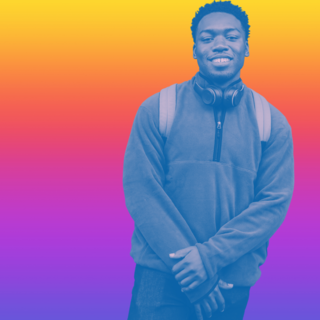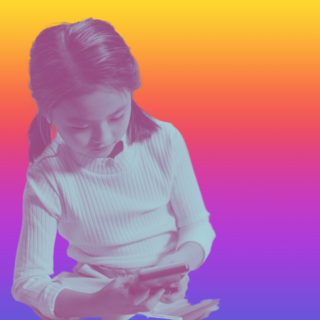Health
How and Why to Invest in Mental Health Tech for Teens
An interview with innovator Solomé Tibebu.
Posted August 17, 2021 Reviewed by Abigail Fagan

This month I interviewed my friend and colleague Solomé Tibebu, who has dedicated her life and career to supporting the mental well-being of teens and young adults.
It’s people like Solomé who give me hope. She represents the vanguard of a new era of mental health discourse, one that harnesses generational qualities for which existing strategies have no framework—namely technology, identity, visibility, and a deeply-rooted sense that we all have an inalienable right to tell our own stories.
Digital native generations are driving both culture and innovation. Creating tools for today’s young people that meet them where they are, when where they are is so visible, is a tough mark to hit.
Solomé runs the Going Digital: Behavioral Health Tech Conference, the largest behavioral health tech conference in the country, and she’s been my friend and frequent co-conspirator in the adolescent mental health space for several years. In her newest role as the Director of the Upswing Fund for Adolescent Mental Health, she is focusing her investment and innovation lens on the needs of LGBTQ+ youth and adolescents of color.
Solomé herself started this work as a teenager, creating the resources she needed but couldn’t find. In this interview, she reminds me that it’s the young people with unmet needs who know everything, and we need to invest in them.
[This interview has been edited for length and clarity.]
Danielle: You are an investor and strategy expert in the digital mental health field. Can you share your motivation for making adolescent mental health a top priority in your career?
Solomé: Yes. So it's very personal to me. I had pretty severe anxiety and obsessive-compulsive disorder (OCD) as an adolescent. And at the time, my family just wasn't familiar.
My parents had no idea what OCD was. It took me a lot of different therapists, a lot of different medications to even figure out what it was. And when I was 16, there really wasn't anything online to help me, or connect with other teens like me so I wouldn't feel so completely alone in what I was experiencing. I started AnxietyinTeens.com in 2006, which was the first for-teen-by-teen online resource.
For 10 years, we did virtual peer support, a learning-through-service program with hundreds and hundreds of students nationwide. It started as a blog for me to just connect with other teens, but it's what sparked my interest in mental health and tech and entrepreneurship.
When I went to college, I decided to be an entrepreneurship major, and I was already pretty confident that I wanted to do something innovative in mental health and tech. And so junior year, the idea finally formalized, and I started a mental health tech startup. It was basically an online CBT [Cognitive Behavioral Therapy] app for patients, and analytics for providers.
I got a little seed funding and hired the programmers and clinicians, and we did some pilot partnerships with some partial day residential programs in the area. And yeah, ultimately, 20-year-old me didn't really know how to launch and operate an enterprise healthcare startup, so it didn't pan out. [Laughs] But it's amazing to see that a decade later now, there's like a million of these different kinds of apps, and our industry has just exploded.
Danielle: Your current project, the Upswing Fund, is focused on mental health equity, investing in organizations that serve lesbian, gay, bisexual, transgender and queer/questioning and other (LGBTQ+) and Black, Indigenous, and People of Color (BIPOC) youth. Can you talk about why Upswing, and why these groups?
Solomé: The Upswing Fund for Adolescent Mental Health was launched in partnership and funded by Pivotal Ventures, which is Melinda Gates's personal investment and incubation company. This is already a topic they've been very focused on. And when COVID set in, it became apparent that more immediate resources need to be invested. Particularly LGBTQ youth and adolescents of color have been struggling so much, as if they weren't already before COVID. That's when they decided to launch the Upswing Fund.
In partnership with Panorama Global and myself, we announced the first Request for Proposals (RFPs) last October, and we had two of them, one for surge capacity grants, another for systems enabler grants.
Surge capacity grants were a hundred thousand dollars each, and those were for direct service providers who were actually serving adolescents of color and LGBTQ+ adolescents. And they could be traditional mental health clinics, but more often than not, they were community-based organizations that had nonclinical approaches yet were very effective in actually engaging the populations we're looking to reach.
The other RFP we announced were for systems enablers. And these were up to 500 thousand dollars each, for nonprofits that were really transforming the entire adolescent mental health ecosystem in a few different ways—through workforce development, policy and public financing, digital health, stigma reduction, and school-based integration.
We got hundreds of applications that we reviewed through the end of the year, and then early this year announced our portfolio of 88 organizations—78 surge capacity grantees, and 10 systems enablers.
Danielle: As you know, my blog is about the intersection of technology and mental health among young people. How does technology play into what you’re doing with Upswing? Why is tech so important to address youth mental health right now, and how can young people be involved in co-creating solutions?
Solomé: Digital technologies was one of the subsectors for the Upswing systems grants. We funded Colorado Education Initiative so that they could adopt Nod and modify the product to address the needs of LGBTQ youth and adolescents of color.
We funded Project Y.E.S, a digital single-session intervention with The Schleider Lab/Lab for Scalable Mental Health at Stony Brook University and Fox Lab at the University of Denver. We funded organizations that could use that gen-op funding to adopt video therapy technology to implement because, you know, schools were such a main channel for so many youth to get their mental health and emotional wellbeing needs met. And when the schools shut down, that just cut things off completely. So we helped a lot of community-based organizations pivot to use text-based solutions, video.
Danielle: Then what is it about tech that’s important for this kind of work?

Solomé: I mean, it's really critical actually. For adolescents who've grown up with digital tech, this is — in some ways, it's less stigmatizing in the privacy of their own home.
One example that I cite frequently is it seemed like a lot of organizations were pivoting to video therapy. But if you gave an LGBTQ teen who's stuck at home during the pandemic some video therapy sessions, they might not want to embrace it because of fear that they're not out yet and their parents can overhear in the next room. So they might prefer a text-based solution, which is something like the Trevor Project, one of our portfolio organizations. So yeah, as one of our advisors, Dr. Alfiee Breland-Noble, has said, tech really has the potential to be a great equalizer to expand access to mental health services in this population.
And you asked the piece about co-creating solutions — that's totally critical. It was, in fact, a question in our applications to understand to what extent youth are involved in the development and dissemination of your programs, because if youth aren't at the table, then we're building the wrong things for them.
Danielle: What would you like to share with teens and young adults who are interested in what it takes to get where you've gone in your career?

Solomé: Hm. Well, I guess I have an interesting — people say "nontraditional" path.
Yeah, I guess related to your last question, youth really do have all the answers a lot of the time. I started Anxiety in Teens when I was 16 years old because I didn't see the solution exist in the market. So I just started it.
Later in college, I started my app because I was going to different therapists, and at the end of every therapy session, they were giving me my mental health homework on a little post-it note, which I ended up just losing in the car ride home.
When I came back the next week, she didn't follow up on how my exercises went. And so I said there should be an app for this.
Youth have the solutions. They're closest to the problem. It's organizations like Hopelab and Upswing that need to empower them and give them the resources and the platforms to be able to go and develop what other teens need.

So all that to say I would like any youth who are listening or reading, that they should have confidence in their experiences and their ideas, and they should pursue it even if adults might be more fearful and say, "Oh, you should get some more experience." No, maybe they just need to connect with the right adults to get the resources they need to bring their ideas to life.




